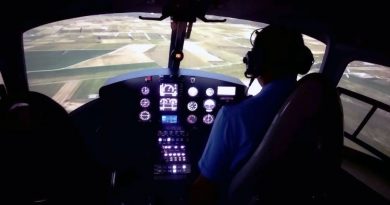
Euronaval 2024 – Naval Group, Sirehna and Couach unveil the Seaquest S multi-role combat USV
At Euronaval 2024 Naval Group, Sirehna, a subsidiary of Naval Group, and Couach, unveiled what they defined “the first unmanned surface vehicle designed for naval combat and warships”
Unmanned systems have become a constant presence in the sky and are destined to become also a common sight over the sea, the Russian-Ukrainian conflict being probably the first one to see unmanned surface vessels (USVs) used in quantity and with considerable effects.

“From a tactical standpoint, drones can be a real asset in extending the ship’s capabilities but also saving its resources,” Aurore Neuschwander, executive VP for drones at Naval Group told the audience at the Seaquest S presentation. “Navies must be able to detect earlier, further away, and to give the right answer quickly and at the right level. This new context is also a real challenge for industry, which must shorten development cycles, ensure product adaptability, and cost competitiveness and work very closely with the navies to include them from the early stages of the product development in a test and learn approach,” she underlined.

Mrs. Neuschwander also highlighted the fact that the Seaquest S has been designed to be fully integrated to a warship, and an FDI frigate model with the USV in starboard bay was visible at the Naval Group stand, however it was made clear that also on support ships with no or minimal modifications.
Entering more into the project details Patrick Pennamen, CEO of Sirehna underlined the short time needed to develop the Seaquest S project. “We have developed it in less than one year, following an agile and incremental process, and today it is available operational at sea.” The news USV needed to be modular and scalable. The Seaquest S is inherently modular “because it is designed around four distinct modules, the platform itself, the communication module, the panoramic sensor integrated module and the effector module. The latter is an area where mission modules will be very easily developed and adapted developed.” As for scalability, the Sirehna CEO explained that the Navy and its crews will now use the USV, will master it, will trust it, and will then be able to imagine new uses that will bring to the system evolution according to their new requirements or operational needs.

The first Seaquest S is fitted for ISR (Intelligence, Surveillance and Reconnaissance) missions, its sensors mast being collapsible to allow to host the USV on board ships, launched and recovered with on board davits. The USV was operationally tested by the French Navy on board a frigate during the Dronathlon [1] demonstration. During that event the Seaquest S was able to detect a certain number of targets and to broadcast the information to the control station, but the same could have been done with a control station on board a frigate. The USV was fitted with a series of sensors, optronics as well as EW, the latter being provided by Rohde & Schwarz, the UMS400 and Ceptor monitoring systems being visible in the pictures of the demonstration.

“It is designed for night and day missions with several types of sensors on the scene, it has a long endurance, can communicate beyond line of sight, so it can be operated from very far away from its base, allowing the mother ship to remain out of the dangerous area, while still investigating that zone without putting the crew, nor for precious assets such as helicopters, at risk,” Mr. Pennamen added. The front bay can also carry cargo, which allows the Seaquest S to perform logistic missions between ships without the need to deploy a helicopter, or it can sail along Special Forces to enhance transport capability. That bay, which is several cubic metres and can host payloads of several hundred kilograms, is however designed to host smart assets and not to be used merely as a cargo bay, Florent Battistella, Chairman and CEO of Couach, the shipyard that designed and produced the hull, underlined.

“The Seaquest S is 9.3 metres long, has a 2.9 metres beam and a mass of less than 6 tonnes. The hull is fully built in composites. Thanks to the 350 hp engine coupled to a waterjet it can reach a maximum speed of 35 knots,” which of course is reduced the more the sea becomes rough, the USV being able to cope with Sea State 5. A Henriksen telescopic mast allows automatic recovery avoiding the need to have personnel on board for this operation. The panoramic sensor integrated mast is designed to host different sensors, ranging from radars, to AIS, to optronics, and is reconfigurable, while communications antennas both line-of-sight and beyond-line-of-sight are located at the rear under a radome.
This means that any potential weapon system will be hosted in the modular mission area at the front, missiles having to be mounted at an angle to avoid damaging the boat with the backblast. An antisubmarine warfare package is among the options, fitted with Thales SonoFlash sonobuoys and Naval Group depth charges.
The next step will be the swarm option; Naval Group is already developing a command and control and mission system that will coordinate all unmanned assets at the Naval Force scale, a swarm capability that will also include micro-drones being forecasted in the 3–5-year timeframe, depending on customers, either national or international, as this is a self-funded activity.
Photos by P. Valpolini and Naval Group.
[1] The Dronathlon, which took place in Toulon last October, saw the participation of the Navy, industry, and the French Defence Procurement Agency (DGA), the aim was to identify the best technological solutions to solve operational issues.



